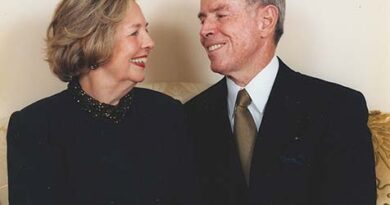Managing Type 1 Diabetes for Life
Published on February 4th, 2016 by user.

The 5-year-old girl sat in a patient bed at Monroe Carell Jr. Children’s Hospital at Vanderbilt watching her aunt blow bubbles to distract her from the tiny needle pricking her finger.
That memory from 17 years ago is one of Sara Hayes’ first. She had been admitted shortly after her family suspected she might have type 1 diabetes. The symptoms of increased thirst and trips to the bathroom were dead giveaways.
One of the first people they met during that unexpected 48-hour hospital stay was Cindy Lybarger, APRN, CDE, a nurse practitioner and now program coordinator at the Vanderbilt Eskind Pediatric Diabetes Clinic.
It was the start of a yearslong relationship with Lybarger and Jennifer Najjar, M.D., associate professor of Pediatrics, who have remained Sara’s primary care providers at the clinic, and through the years have played a key role in educating the family on how to manage pediatric diabetes. Now, as the 22-year-old from Bethesda, Tennessee, enters her early years of adulthood, the care providers at the clinic have helped transition her to the Vanderbilt Eskind Clinic for adults.
Caring for children and adults in a single clinic creates an environ-ment that enhances diabetes care and research. A seamless transi-tion of patients from pediatric to adult diabetes care is possible in this unique clinic setting.
“You go through a lot of life changes with families when you see them for 10 or 15 years, a lot of life events,” Lybarger said. “So we have a lot of history with our families.”
The care providers have been part of Sara’s life through happy and challenging times.
“They are like family to us,” said Kim Hayes, Sara’s mother. “You see a doctor for 17 years. That’s a long time.”
Vanderbilt’s care provided a foundation to help Sara live without diabetes holding her back, pursuing hobbies such as fishing and horseback riding. As an elementary and upper school student, clinicians and other staff at the clinic gave her confidence to care for the illness herself, during a time when not all schools had nurses.
Initially, Kim spent time going to schools to make sure Sara was OK during an episode of high or low blood sugar.
Slowly, the clinic worked to transition much of the manage-ment of the illness from her caregivers to Sara.
The team also played a key role after Sara was involved in a nearly fatal car crash while she was a student at Middle Tennessee State University. As Sara lay in a coma for three weeks at Children’s Hospital after suffering a traumatic brain injury, Najjar and other care providers from the pediatric clinic consulted with the intensivists to help manage her diabetes during the episode.
“These people were God’s angels sent to us,” Kim Hayes said. “Had it not been for Vanderbilt on all levels, she would not be here. So to me, they’re amazing, sincerely.”
In November Sara transitioned to the Vanderbilt Eskind Clinic for adults, right next door to the clinic she went to for so many years.
“I can’t imagine having better doctors,” Sara said. “I’m comforted to know they’ll be close by.”
– by Josh Brown

